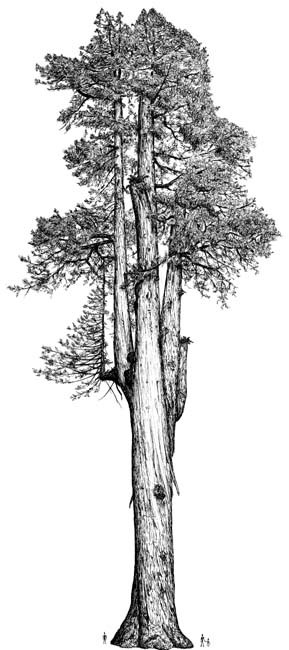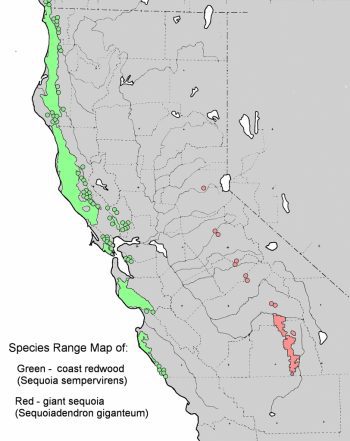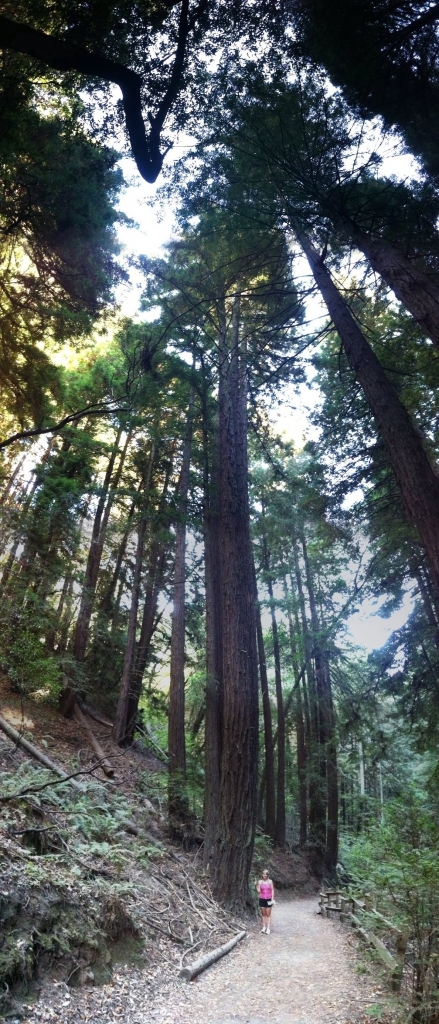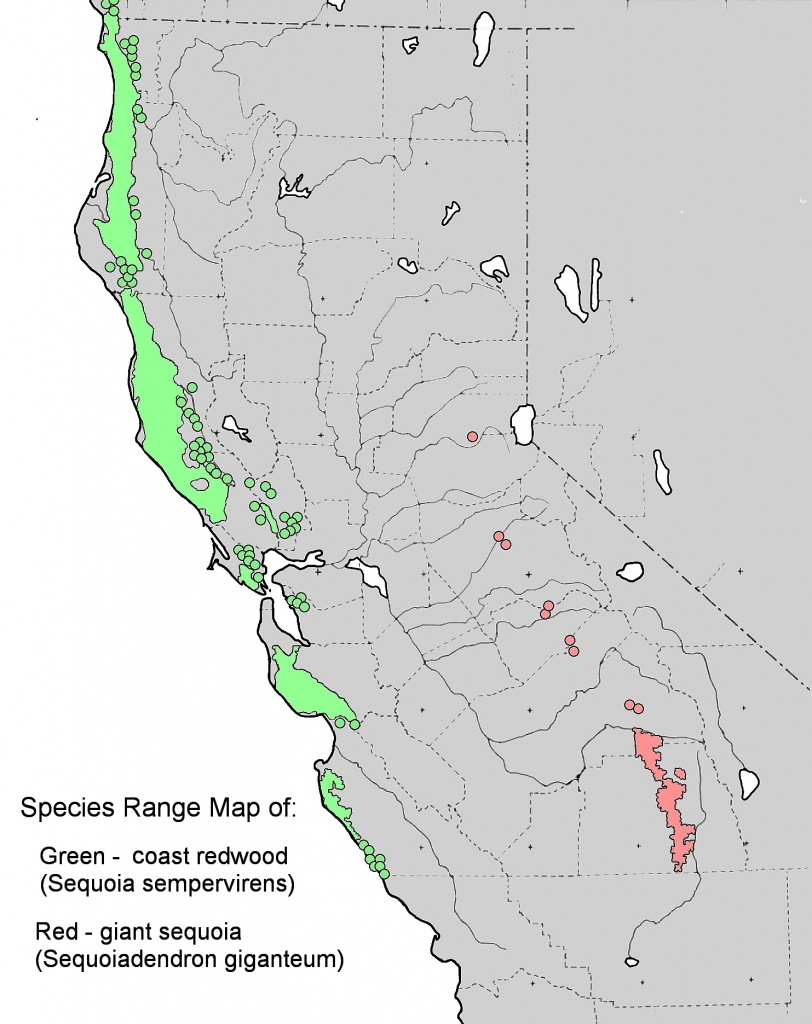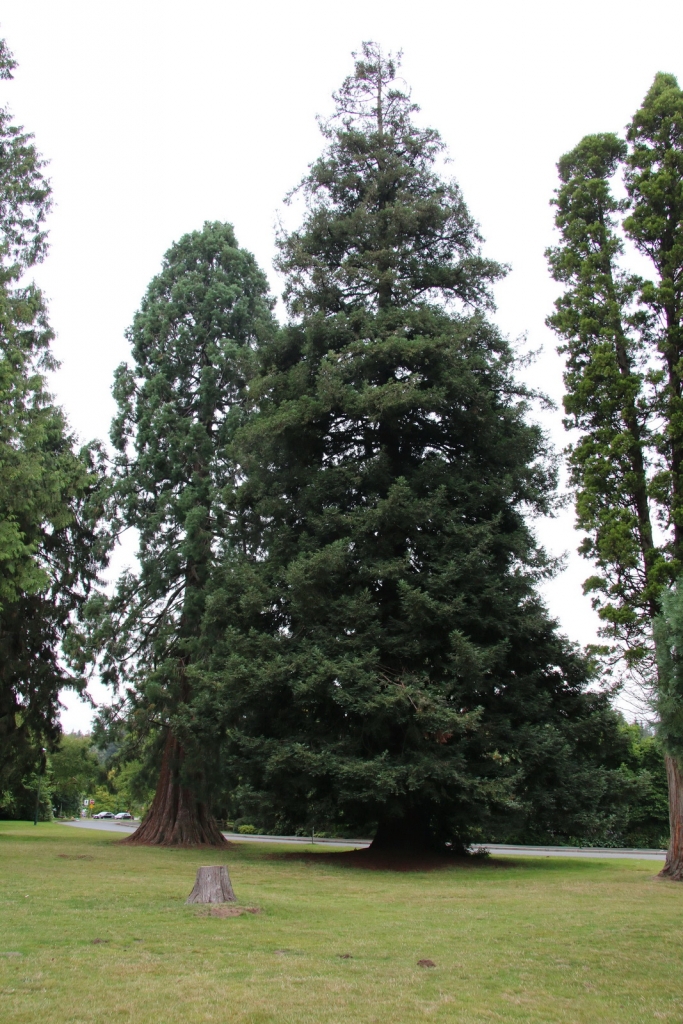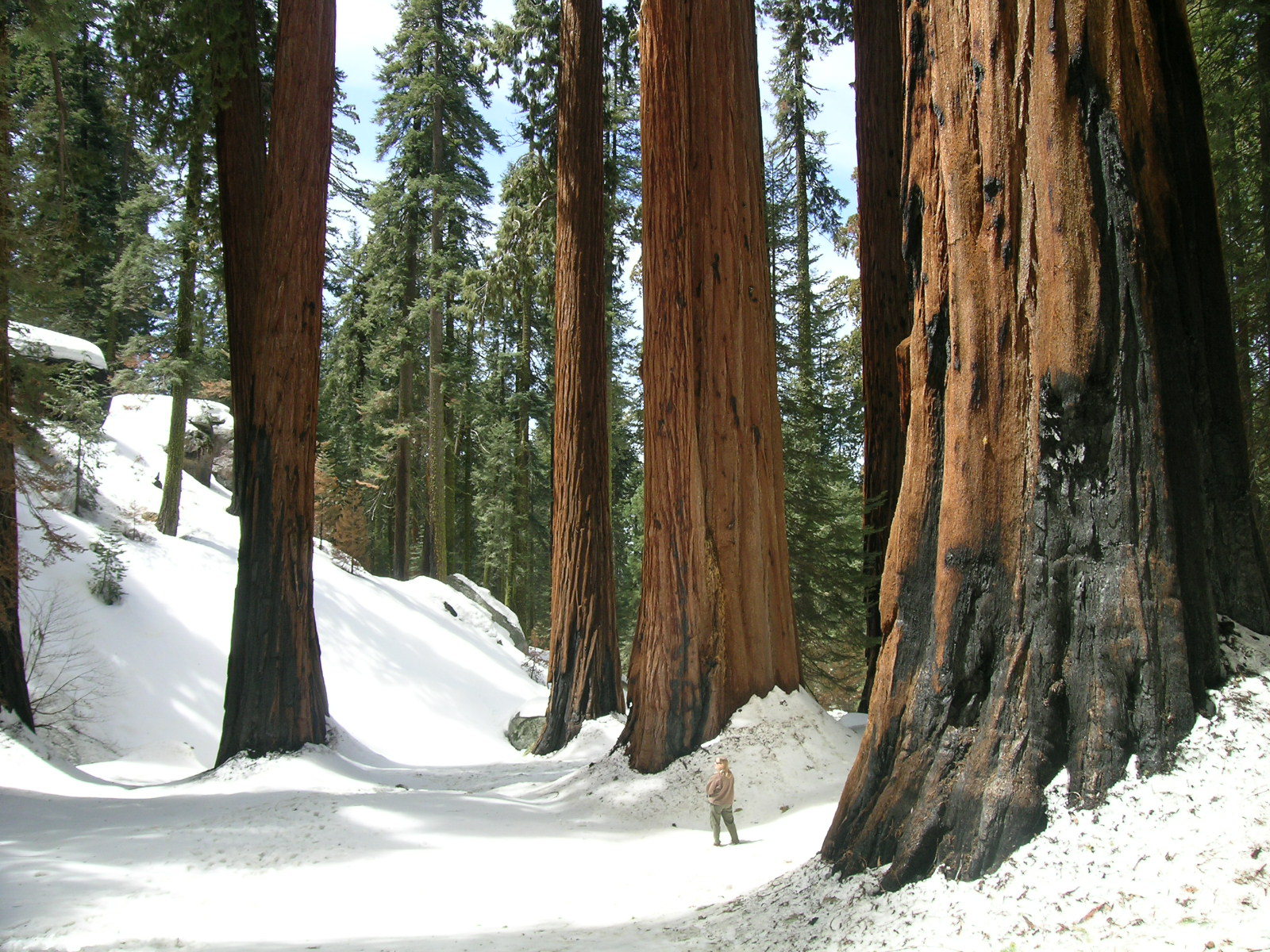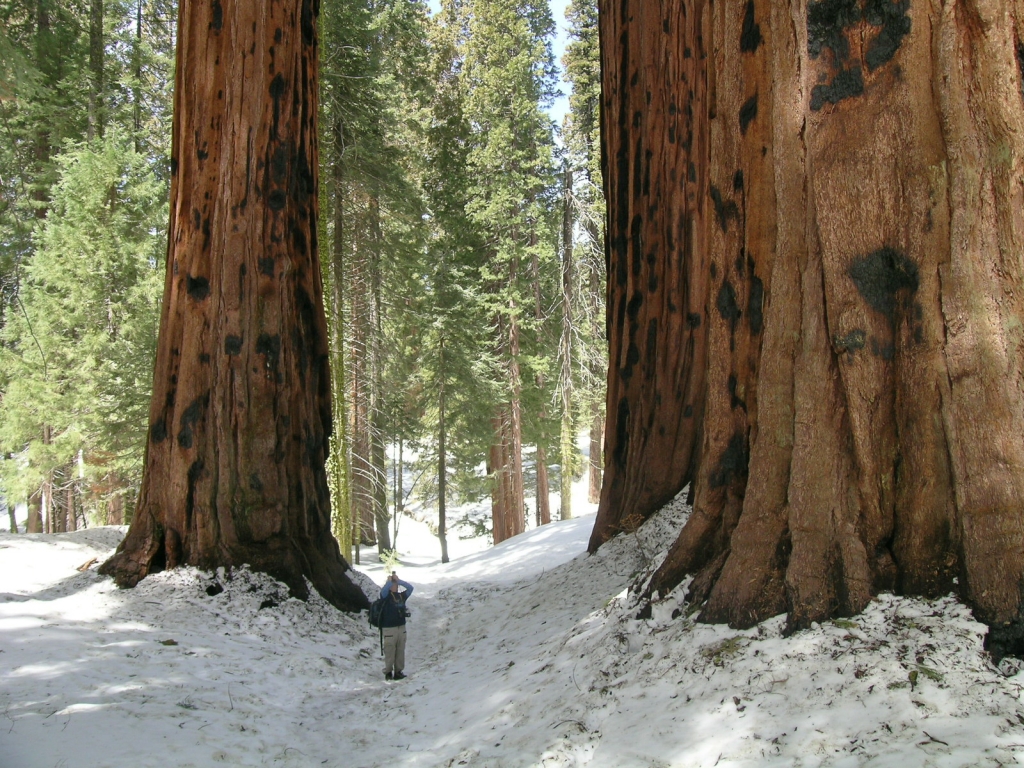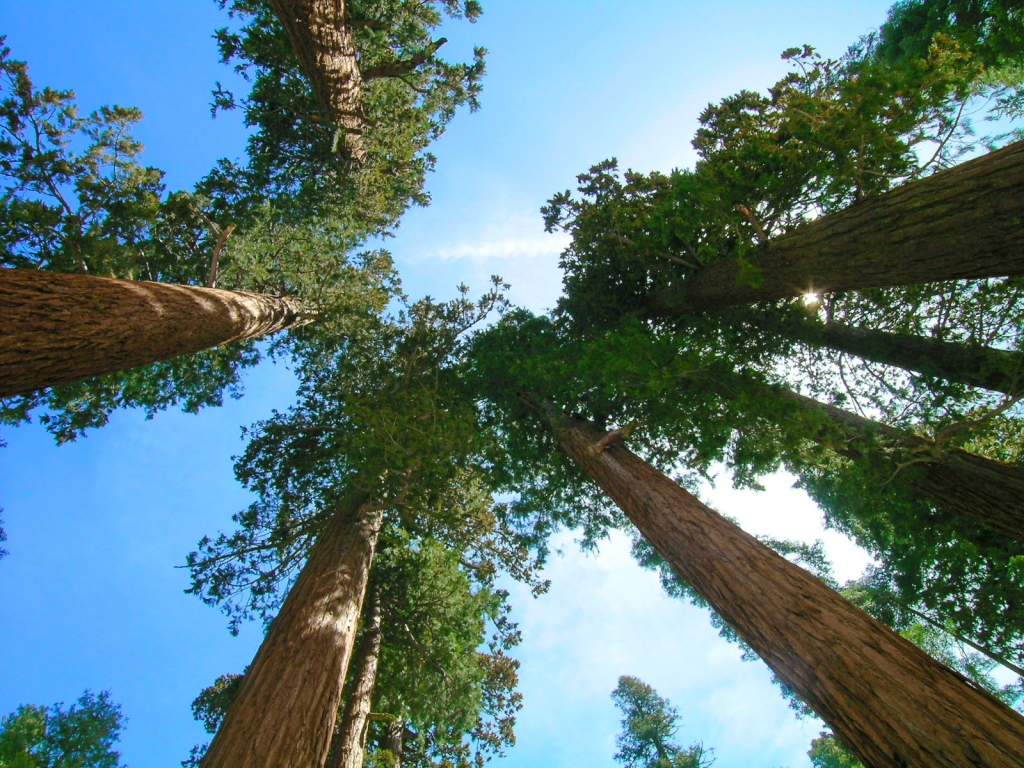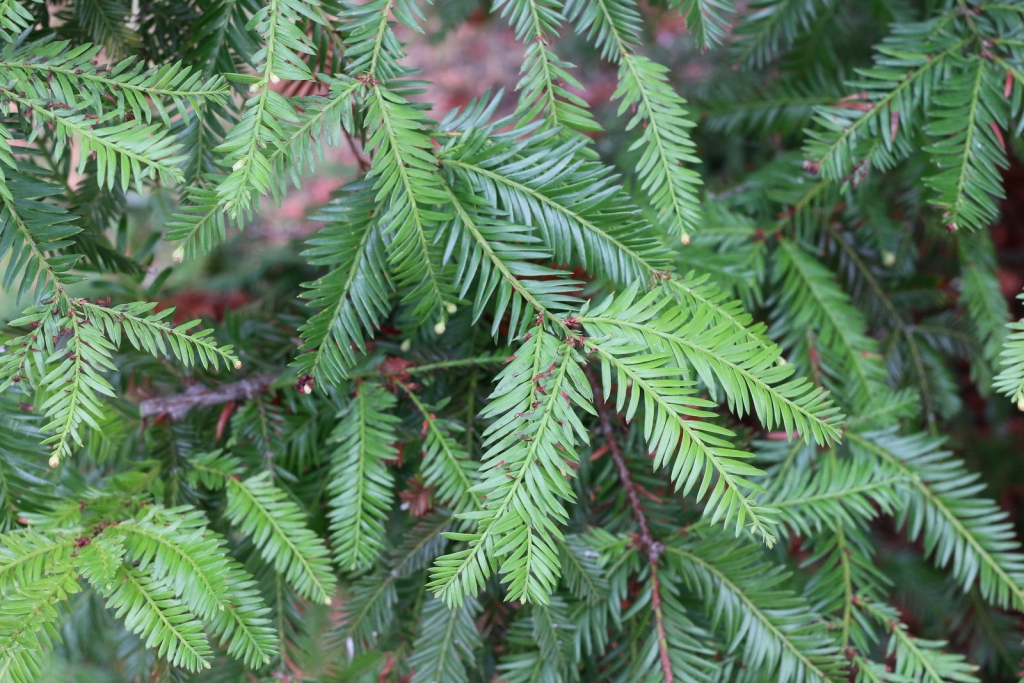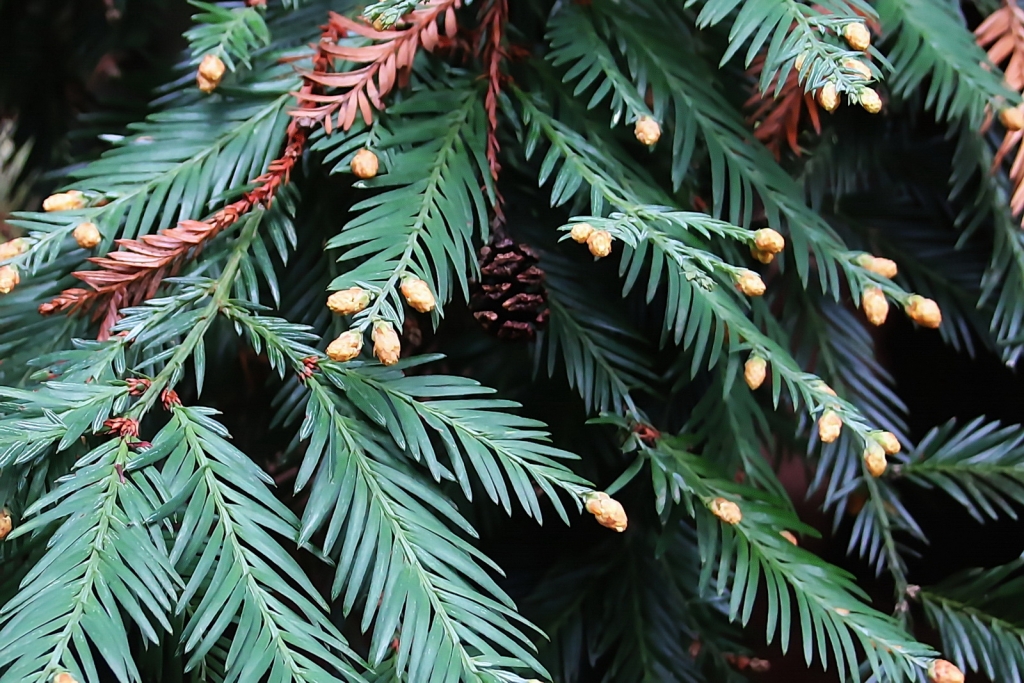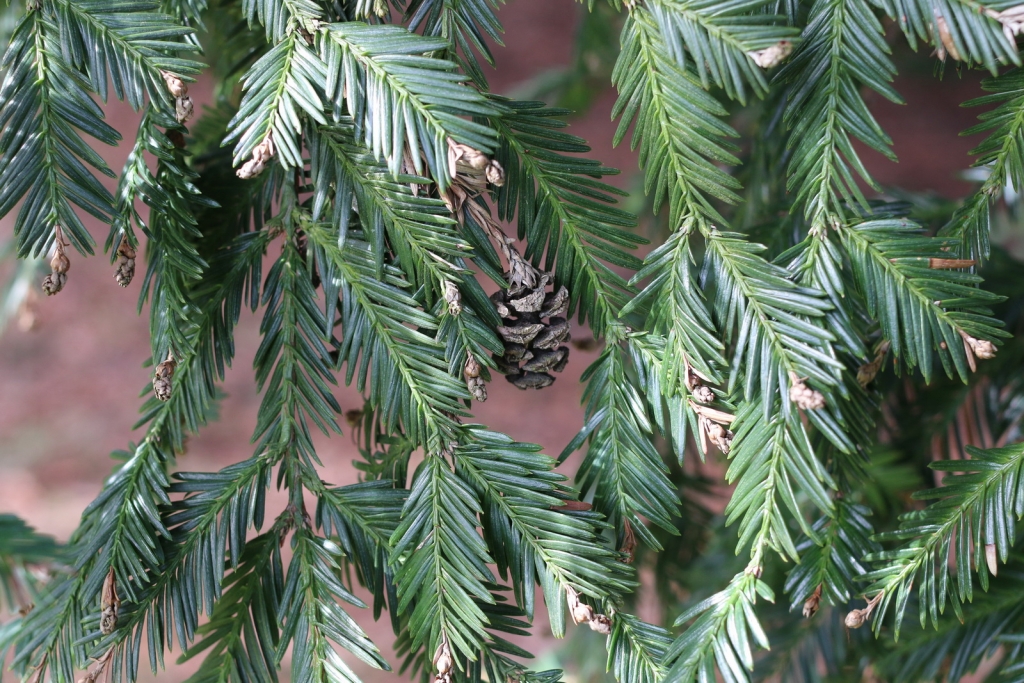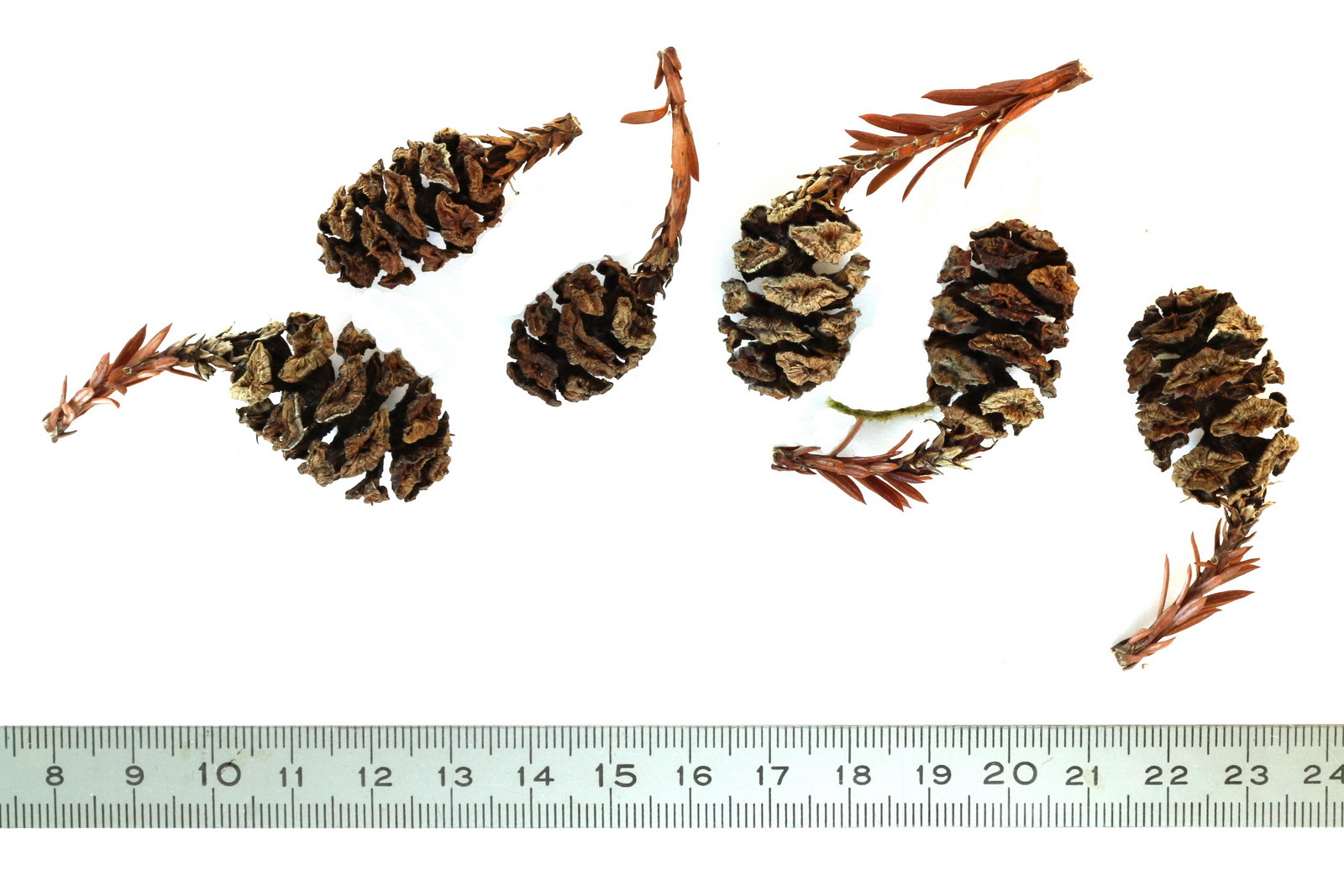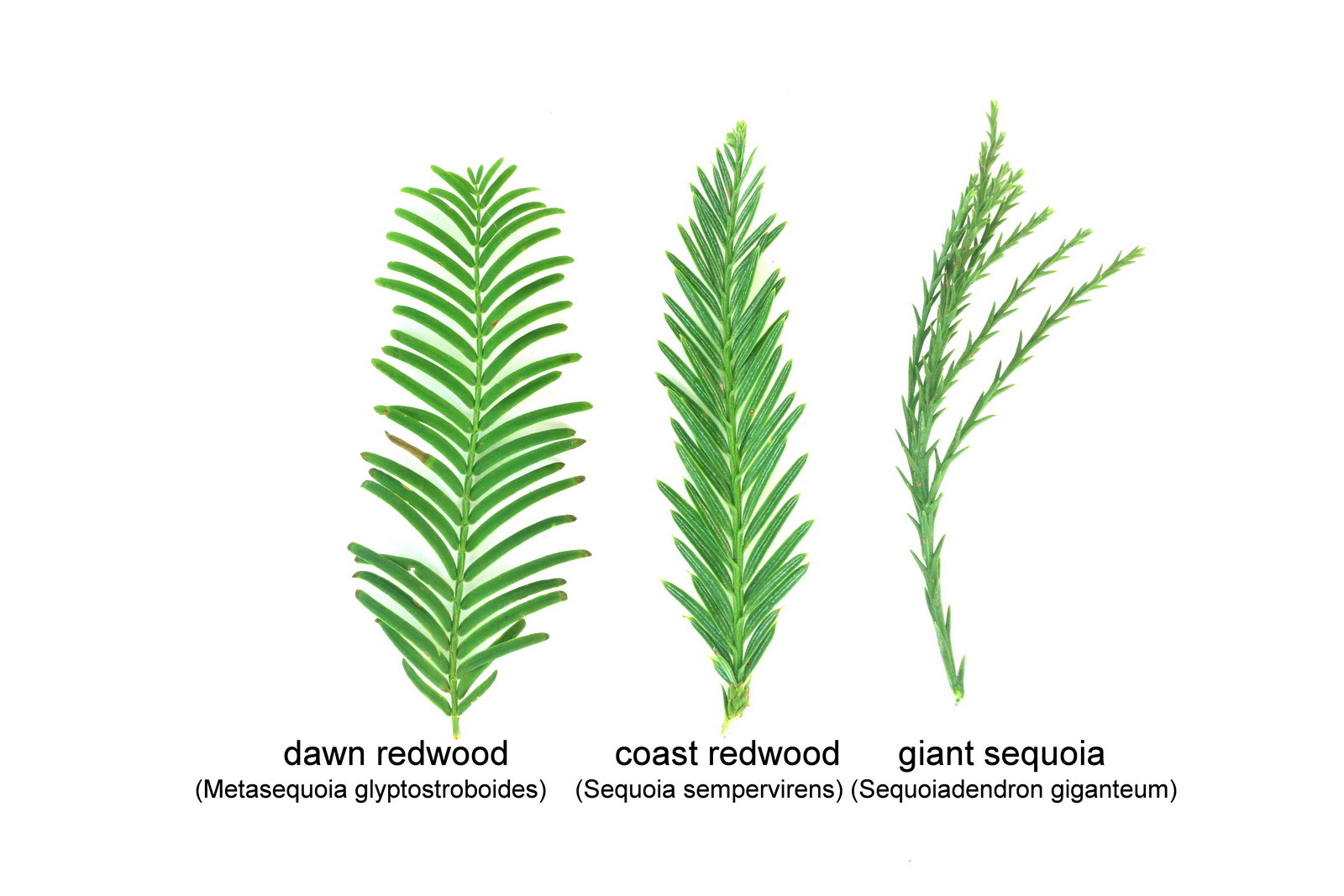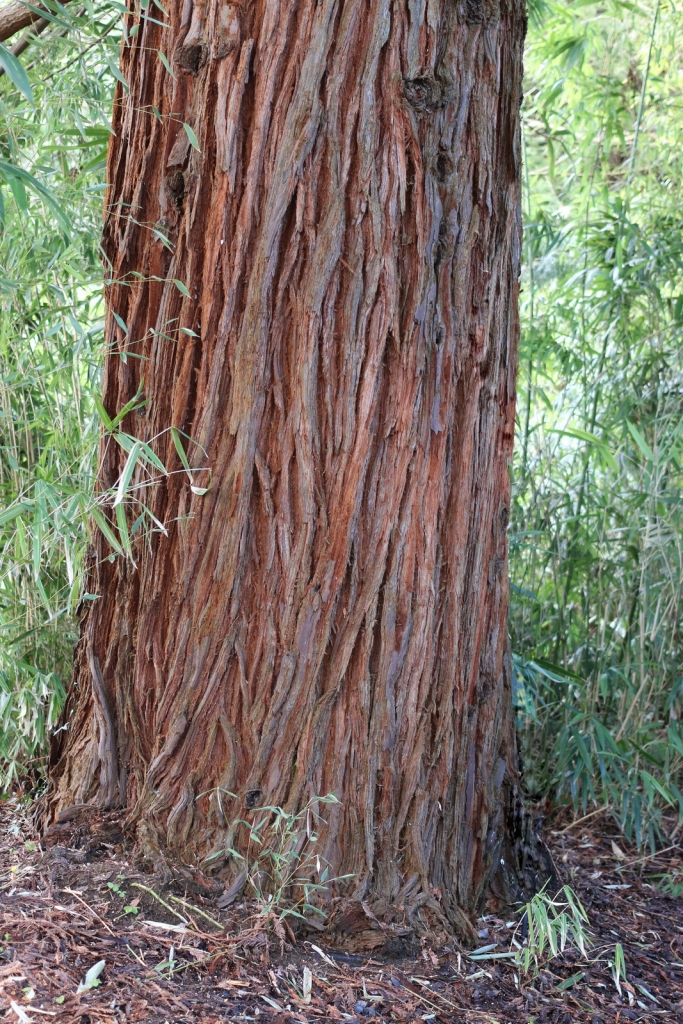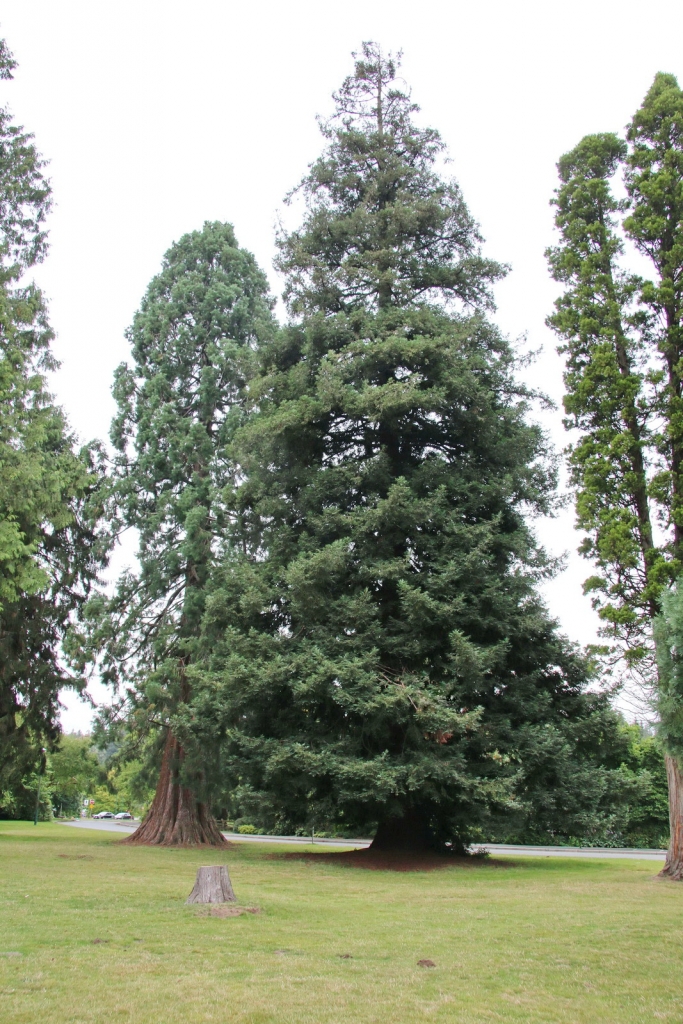Sequoia sempervirens, as described in 1847 by (D. Don) Stephan Friedrich Ladislaus Endlicher (1804-1849), in Synopsis Coniferarum, 198th edition, is commonly known as coast redwood, redwood, or California redwood; as well as palo colorado in the Spanish language. The species literally means "evergreen" in the Latin language.
Description. Coast redwood is an evergreen, coniferous species of tree that grows to mature heights of 200 to 325 feet (60 - 100 m) tall; with a massive, slightly tapering trunk, that measures up to 10 to 15 feet (300 - 460 cm) or more in diameter, measured at breast height.
- Trunks are impressively buttressed at the base and often display rounded swellings or burls.
- Crown is conic and monopodial when young, becoming narrowly conical, irregular and open with age.
- Bark is red-brown in color, with a thick, tough and fibrous texture, up to circa 14 inches (35 cm) thick, deeply furrowed into broad, scaly ridges; inner bark is cinnamon-brown.
- Branches sweep downward to slightly ascending.
- Twigs are slender, dark green in color, forking in a plane, and ending in a scaly bud.
- Leaves (needles) measure 0.04 to 1.2 inches (1 - 30 mm) long, generally with lines of stomata on both surfaces. Those seen on leaders, ascending branchlets, and fertile shoots are divergent to strongly appressed, short-lanceolate to deltate shaped. Those on horizontally spreading to drooping branchlets mostly linear to linear-lanceolate shaped, divergent and in held in 2 ranks, with 2 prominent, white abaxial stomatal bands.
- Pollen cones nearly globose to ovoid shaped, measuring 0.08 to 0.2 inch (2 - 5 mm) log, borne singly on short terminals or axillary stalks.
- Seed cones measure 0.48 to 1.4 inches (12 - 35 mm) long, elliptically shaped, and reddish-brown in color, with many flat, short-pointed scales. Cones are borne pendant at the ends of leafy twigs; maturing in one season.
- Seeds are flattened, 0.12 to 0.24 inch (3 - 6 mm) long, and leathery.
Distribution. This species is native to USA - southwestern Oregon and northwestern California, confined to coastal areas (within 40 miles/60 km of the sea) experiencing a great deal of fog; at elevations generally below 1,000 feet (300 m) above sea level, occasionally higher. It is mostly found in alluvial soils, where it forms pure stands or occurs with Pseudotsuga menziesii, Chamaecyparis lawsoniana, or other local conifers.
Hardy to USDA Zone 8 - cold hardiness limit between 10° and 20°F (-12.1° and -6.7°C).
